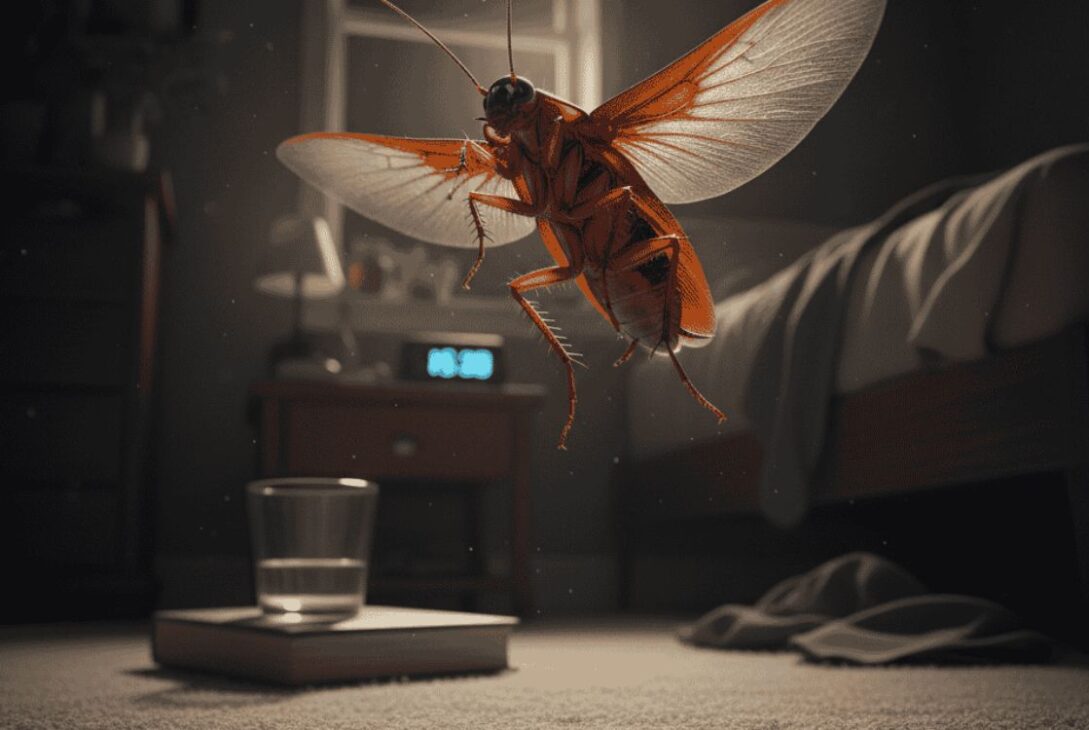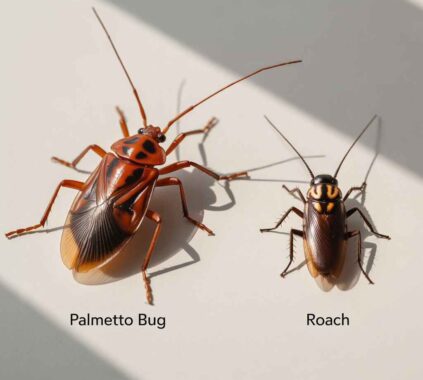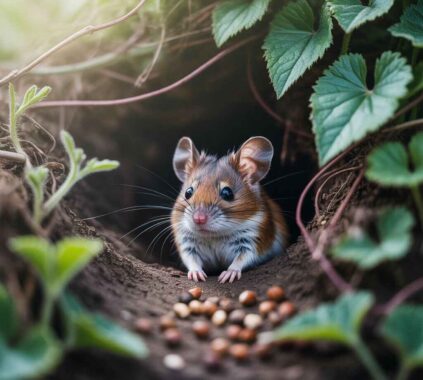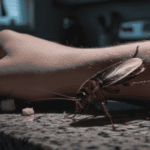Table of Contents
Do roaches fly? If you’ve ever found a cockroach zooming across the room, you’ve probably wondered if this is something they all do. Cockroaches are commonly associated with creeping through dark corners and scurrying away when you turn on the light, but some species are actually capable of flight.
Understanding cockroach flight behavior is important, especially if you’re trying to control these pests in your home. While it may seem unsettling, not all roaches can fly. However, the ones that do can be a bigger nuisance than those that stick to the ground. In this post, we’ll cover the facts you need to know about cockroach flight, from which species can fly to how you can prevent them from entering your home. Let’s get started!
1. Do Roaches Really Fly? The Truth Behind Their Flight Abilities
You might be wondering: Do roaches fly? The short answer is yes, but not all cockroaches have the ability to take flight. While there are more than 4,000 species of cockroaches worldwide, only a select few can actually fly.
Not all roaches fly. In fact, many cockroach species prefer to stay on the ground. However, species like the American Cockroach and Australian Cockroach are capable of flight. These types are more commonly found in homes and commercial spaces. They use their wings primarily to escape danger or in search of food and mates.
It’s a common misconception that all roaches are natural flyers, but the truth is that their ability to fly varies by species. Some may only fly in short bursts, while others can sustain longer flights. It’s important to understand this when you’re dealing with a roach infestation, as flight behavior can impact how you approach pest control.
2. What Makes Some Roaches Capable of Flight?
So, why can some roaches fly while others cannot? The key lies in their anatomy and environmental factors.
Species with wings like the American Cockroach and Australian Cockroach have fully developed forewings and hindwings that allow them to fly. Their wings are relatively strong and capable of sustaining flight, especially in search of food or during mating season.
However, it’s not just anatomy that influences their ability to take flight. Environmental factors also play a big role. For example:
- Temperature: Cockroaches are more likely to fly in warmer temperatures. If it’s too cold, they may prefer to stay on the ground.
- Food Availability: Roaches often take flight to search for new sources of food. If they have already exhausted one area, they might fly to explore other places in the home.
- Mating: During mating seasons, cockroaches are more likely to fly in search of a mate.
3. How Far Can Cockroaches Fly?
When it comes to how far roaches can fly, the distance can vary depending on the species and environmental conditions. Roaches typically don’t fly long distances compared to other insects. However, some species can manage to fly several feet or even over 10 feet at a time.
For instance, the American Cockroach, one of the most well-known flying species, can fly up to 15 feet in a single burst. While they don’t tend to sustain long flights, they are capable of making quick, targeted movements to reach their destination.
In controlled studies, researchers have found that flying roaches tend to fly in short spurts. They will often fly from one point to another and then land, only to take off again later if needed. While they don’t migrate like birds, they do have the ability to travel significant distances when necessary, especially when in search of food or a mate.
4. When Do Roaches Fly and Why Does It Matter?
If you’re wondering when roaches are most likely to take flight, the answer is generally at night. Roaches are nocturnal insects, which means they are most active when it’s dark. They typically fly in the evening or nighttime hours, when they feel safe from predators.
Roaches take flight for several reasons, but their main motives are usually to find food or mate. If a cockroach is in a place with limited resources, it may fly to search for better opportunities. During mating season, males especially will fly around looking for potential mates.
From a pest control perspective, understanding when roaches fly is key. Since they fly at night, they might be harder to spot. And if they’re flying indoors, it can be difficult to track their movements. The best way to deal with flying roaches is to take preventative measures in your home, such as sealing cracks and reducing food sources.
5. How to Prevent Roaches from Flying Into Your Home
While it may be unsettling to think about roaches flying into your home, there are several ways you can prevent this from happening. Here are a few tips:
- Seal Cracks and Gaps: Cockroaches can enter through even the smallest cracks. Make sure to seal any gaps in your walls, windows, and doors to prevent roaches from flying inside.
- Control Lighting: Roaches are attracted to light, so try to reduce outdoor lighting at night or use yellow bug lights, which are less attractive to insects.
- Keep Your Home Clean: Roaches are drawn to food and moisture. By keeping your home clean and free from crumbs or spills, you can reduce the chances of attracting flying roaches.
- Use Screens: Install mesh screens on windows and vents. This will prevent roaches from entering while still allowing fresh air to circulate.
- Regular Pest Control: If you’re dealing with an infestation, it may be time to call in professional pest control services. Regular inspections and treatments can help eliminate roach populations before they start flying around your home.
6. Cockroach Flight: An Unsettling but Fascinating Behavior
Have you ever seen a flying cockroach? If so, you probably remember the moment vividly. Cockroaches have an unsettling way of flying, often catching people off guard. Their sudden movements can be startling, but there’s more to it than just being a nuisance. Cockroach flight behavior is a survival tactic.
In real-life encounters, people have shared experiences where flying roaches have flown into their faces or across the room unexpectedly. Some people even report being more afraid of flying cockroaches than the regular, ground-dwelling ones. This is understandable, considering how quick and unpredictable their flight patterns can be.
Despite their unsettling nature, roaches’ ability to fly is an interesting survival strategy. They use flight to escape danger and to find new areas for food and mating. Understanding this behavior can help reduce the fear and anxiety many people experience when they encounter a flying roach.
Conclusion: Keep Your Home Roach-Free with Simple Steps
In conclusion, do roaches fly? The answer is yes, but not all cockroaches have the ability to take flight. Understanding which species can fly, when they fly, and why they do it can help you prevent these pests from taking over your home.
1. Do All Roaches Fly?
No, only certain species, like the American and Australian cockroaches, can fly. Most roaches stay on the ground.
2. Why Do Roaches Fly?
Roaches fly to escape danger, find food, or search for mates. Flight is mainly a survival tactic.
3. How Far Can Roaches Fly?
Roaches can fly up to 15 feet, but they generally prefer short bursts rather than long-distance flights.
4. When Do Roaches Fly?
Roaches are most active at night and typically fly in the evening to avoid predators.
5. How Can I Prevent Roaches from Flying In?
Seal cracks, reduce lighting, and keep your home clean to stop flying roaches from entering.












